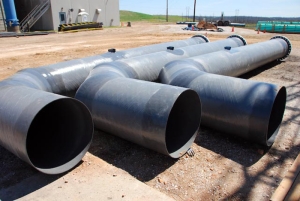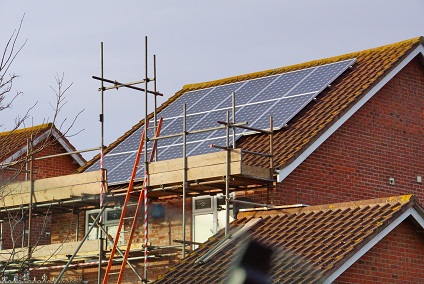FRP for HCL Applications
 There are many applications for hydrochloric acid (HCL). From the manufacturing of high fructose corn syrup, dyes, phenols, and plastics to chemical intermediates such as ferric chloride which is used as a flocculant in sewage treatment and drinking water production.
There are many applications for hydrochloric acid (HCL). From the manufacturing of high fructose corn syrup, dyes, phenols, and plastics to chemical intermediates such as ferric chloride which is used as a flocculant in sewage treatment and drinking water production.
From picking, metal cleaning, to the ore reduction of metals (i.e. vanadium, tantalum, tungsten and tin) —hydrochloric acid has proven its usefulness throughout many industries.
Regardless of your industry if you use HCL you need a safe and economical way to handle this corrosive material. FRP is an ideal solution for handling corrosive materials offering a myriad of benefits that will save money over the long-term. The inherent corrosion resistant characteristic of our FRP makes it a cost-effective, strong, light-weight solution for corrosion resistant equipment applications in the chemical process industries and in water and waste water treatment areas. Similarly, the design flexibility of FRP allows it to be adapted very easily to fill niche roles in many other industries, for example, food and beverage, pharmaceutical, and HVAC.
FRP Has Long Service Life in Corrosive Environments
In a filament wound composite pipe, the cost of adding a corrosion barrier/liner is not all that great in comparison to the true cost of the pipe. The selection of the proper type and thickness of the corrosion barrier/liner can more than double the service life of the pipe.
FRP has a distinct advantage over metal alloys, such as titanium, and rubber-lined steel with lower installation costs, reduced maintenance, and long service life proven with over 20 years of successful operating experience at many plants and facilities around the world. More importantly, FRP is recognized as having superior corrosion resistance and abrasion resistance when compared to specialty alloy metals, in stringent chemical processing and in aggressive hydrometallurgical environments.
HCL Applications
- Manufacture of Dyes, Phenols and Plastics.
- Ore reduction (manganese, radium, vanadium, tantalum, tin and tungsten)
- Food processing (corn, syrup, sodium glutamate)
- Pickling and metal cleaning
- Water treatment – Resin regeneration and demineralizers
- Manufacture of chemical intermediates, such as FeCl3, ZnCL2, AlCl3, etc.
- General Cleaning in households and in commercial, industrial and institutional establishments.
FRP Chemical Processing Applications
In the chemical processing industry FRP are typically used for pipes, ductwork, storage tanks and basins, absorption towers, drying towers, solvent extraction vessels, gas scrubbers, packed reaction columns, pressure vessels, process reaction vessels, stacks, process containment equipment, packing support systems, packed bed distributors, bed limiters, and distributor feed headers—to list some examples. We offer FRP solutions; new design or an incremental improvement that will interface into an existing design—we have the capacity and capabilities to enhance your project.

 Recently featured by
Recently featured by  There are many
There are many  Sustainability is big word these days. It can mean a lot of different things, depending on the context—it can also be overused or misunderstood. In recent years the demand for more green construction or sustainable construction has been driven largely by consumers in the construction sector.
Sustainability is big word these days. It can mean a lot of different things, depending on the context—it can also be overused or misunderstood. In recent years the demand for more green construction or sustainable construction has been driven largely by consumers in the construction sector. Fiber Reinforced Polymers (FRP) and Combustion
Fiber Reinforced Polymers (FRP) and Combustion




